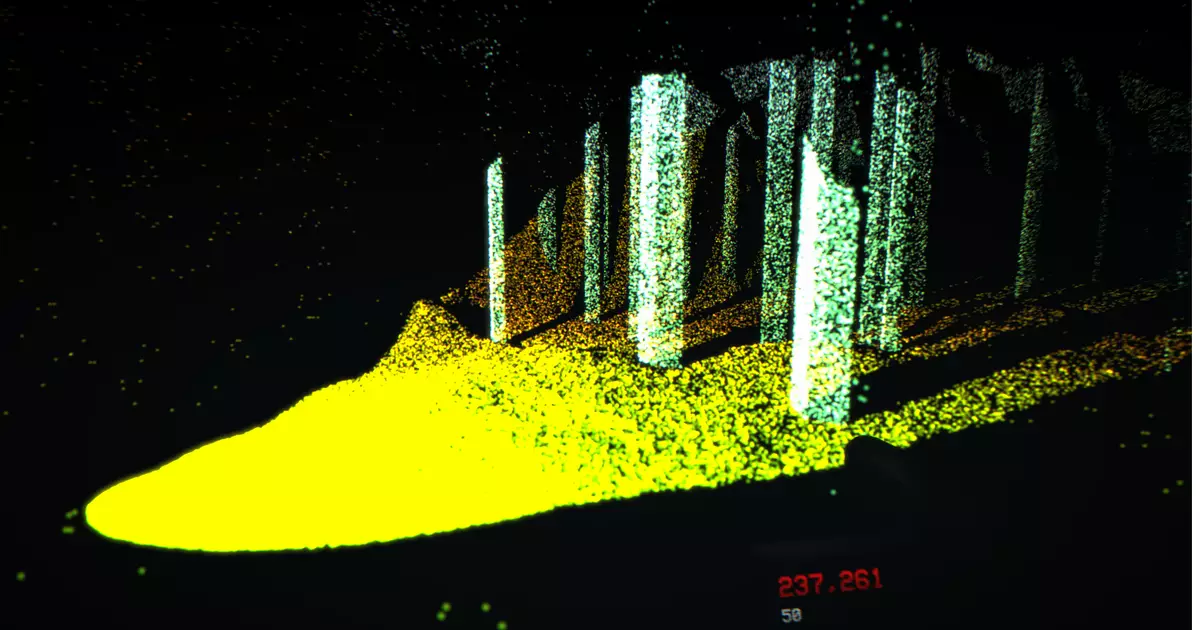LiDAR, short for “Light Detection and Ranging,” is an innovative technology that employs laser beams to measure distances to objects by analyzing the time it takes for the light to return to its source. This method, while rooted in complex scientific principles, has found its way into various applications beyond traditional geospatial tasks. From mapping intricate cave systems to monitoring the subtle changes in tree canopies in the Amazon, LiDAR has proven invaluable in fields demanding precision. Yet, its journey into the realm of creativity is particularly fascinating. In recent years, we’ve begun to see this sophisticated tool utilized by artists and developers alike, delivering captivating visualizations and unique interactive experiences that challenge our perceptions of art, exploration, and even horror in gaming.
LiDAR Exploration Program: A Unique Gaming Experience
Enter the LiDAR Exploration Program by KenForest—a game that rides the fine line between relaxation and atmospheric horror. In this singular experience, players wield a handheld LiDAR scanner, effectively crafting a spatial understanding of their surroundings within virtual landscapes. Drawing parallels to the meditative environments found in titles like PowerWash Simulator, LiDAR Exploration invites players to engage with their surroundings at a leisurely pace. Unlike traditional games that prioritize adrenaline-pumping action, this game encourages introspection and curiosity as players scan meticulously designed environments for various objects.
The premise might sound simple: move through beautifully rendered levels and create a digital map of the surroundings. However, the brilliance lies in how this simple mechanic morphs into something profound and unsettling. Players quickly realize that LiDAR has its limitations; it cannot reveal the hidden depths of opaque objects, leading to moments of eerie realization as what appears solid may, in fact, be hollow and deceptive. This interplay of known and unknown, of creation and destruction, generates a unique tension that lingers in the player’s mind long after they put the controller down.
Subtle Horror Through Exploration
What sets the LiDAR Exploration Program apart is its uncanny knack for weaving horror into its fabric without resorting to overt jump scares or grotesque imagery. The atmosphere is cultivated through subtlety, as the LiDAR scanner becomes the player’s only means of perceiving the world. Relying on this device to illuminate the environment, players often find themselves uncovering unsettling truths—objects that seem well-defined from one angle dissolve into nothingness from another. Just as the character in a classic horror film becomes aware of an unseen dread lurking in the shadows, players experience a similar revelation here.
The addition of a full-screen scanning function adds another layer to this atmospheric experience. When players engage this feature, they are momentarily lulled into a sense of stability, akin to viewing a flat image. Yet, as they shift their perspective, the world snaps into three-dimensional clarity, evoking a sense of disorientation and existential dread. This clever design nudges players to reflect on the limits of perception and the intricacies of light—a concept often overlooked in gaming.
Artistic Exploration: Beyond Horror
While LiDAR Exploration Program may be framed within a horror narrative, it shines brightest as an artistic tool. Players may find themselves drawn more to the aesthetic possibilities than the intended scares. The game invites you to manipulate beams of light and delve into the rich interplay between illumination and shadow. With the ability to tighten or expand the laser cone, players can focus on intricate details—a single leaf, the structure of tree bark, or the transient sparkle of sunlight on water’s surface.
This artistic exploration transforms gameplay into a reflective process, allowing you to appreciate the quiet beauty of nature through a different lens. Rather than merely questioning the existence of morbid entities, you are compelled to observe the juxtaposition between light and darkness. In this way, the game aligns itself with a meditative experience, offering an escape into a curated world defined by the nuances of visual exploration.
In a gaming landscape often dominated by hyper-realistic graphics and frantic action sequences, KenForest’s LiDAR Exploration Program dares to challenge conventions. By placing emphasis on light, perception, and the meditative act of exploration, it holds the potential to inspire future iterations of artistic expression within the medium. The currents of creativity run deep in the intersection of science and art, and this game proves that even the most unexpected tools can be reimagined into captivating, evocative experiences.

